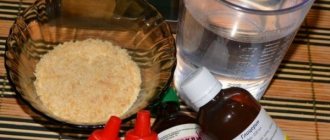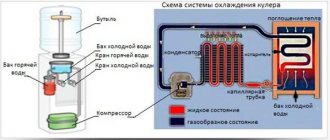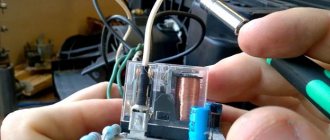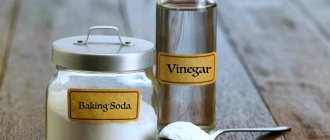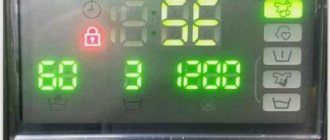If your kitchen sink is clogged, there are several ways to unclog it and restore normal water flow. In many cases, you can solve the problem without calling a specialist to your home, using folk recipes, household chemicals or simple plumbing fixtures.
Ways to clear a clogged sink.
Causes of blockage
Water can stagnate in the sink due to a malfunction or improper installation of the drainage system - the use of small-diameter pipes, a large number of bends, twisting of the corrugations, etc. However, most often a blockage in the kitchen occurs for other reasons.
The narrowing of the internal diameter of pipes and the formation of plugs is facilitated by:
- small and large organic matter (food debris, peels of vegetables and fruits, small bones, hair);
- mineral salts and solid impurities contained in low-quality tap water;
- rust fragments resulting from corrosion of metal water pipes;
- vegetable and animal fat deposited on the walls of the siphon and pipes;
- items of inorganic origin (kitchen sponges, rags, scraps of paper, polyethylene, metal or plastic parts, earth, sand, pebbles, etc.).
Plaque on the inner surface of the sewer system forms gradually, covering the pipes and siphon layer by layer, thickening and reducing the clearance. In case of severe contamination, small waste does not have time to go into the common building drain, sticks to fatty deposits and turns into a plug.
The most vulnerable places are the siphon, corrugated walls, joints and bends of sewer lines. Incipient problems with the kitchen wiring are indicated by an unpleasant odor from the drain hole and the slow drainage of liquid from the sink. And if water accumulates in the sink, forming a “lake”, it is necessary to urgently remove the blockage.
What clogs can you clear yourself?
At home, you can remove the plug and restore normal water flow yourself using one of the methods:
- Household chemicals for cleaning drains, bathtubs, sinks. It contains aggressive components that dissolve any type of organic contaminants.
- Folk methods.
- Mechanical cleaning with a plunger - a special device in the form of a rubber hemisphere mounted on a long wooden or plastic handle.
- Dismantling and washing the siphon.
- Manual cleaning of the pipeline with a plumbing cable, or “cobra”.
In the first three cases, even a fragile woman who knows how to unclog a sink can get rid of the problem. It is better to entrust manipulations with the cable and disassembling the siphon to a man or a plumber.
Tips from the professionals
Tips from plumbers will help you better cope with cleaning your kitchen sink:
If clogged pipes are a frequent and regular occurrence in your home, then it makes sense to purchase a plumbing cable. It is inexpensive and will last for many years. Having a comfortable handle at one end is a must.- If the problem with blockages is related to installation errors, it is recommended to correct them, otherwise blockages will occur constantly.
- If the blockage was broken through with a cable, it must then be cleaned of dirt and dried. Store in a dry place, rolled up.
- It is better to clean drains in the kitchen with the window open so that there is an influx of fresh air, since in most cases the smell will be unpleasant.
- The combination of mechanical and chemical methods makes pipe cleaning more effective. For example, use a plunger, and then use special household chemicals.
If you are interested in how to clear a clog in a pipe, sink or toilet, take a look at this section.
Cleaning a sink with a plunger
If your kitchen sink is clogged, a primitive plumbing tool - a plunger - will help remove the blockage. This inexpensive gadget doesn't take up much space, but it comes in handy from time to time.
The operating principle of cleaning a sink with a plunger.
Operating principle of the plunger:
- the rubber bowl creates a tight connection with the surface of the sink;
- during forceful translational movements made by the handle, a water hammer occurs in the drain system;
- due to a pressure surge, the plug in the pipe is destroyed and pushed forward or backward along the line;
- water washes away the remaining clogs into the general sewer system.
The technology for clearing clogs with a plunger is so simple that anyone can handle it:
- Plug the overflow hole in the upper part of the sink with a wet cloth. It will block the air outlet from the system and increase the power of the water hammer.
- Press the edges of the rubber bowl tightly against the surface of the sink so that the drain hole is completely closed, and excess air comes out from under the plunger and a vacuum is formed.
- Forcefully make several movements with the handle up and down and sharply tear the plunger away from the sink. Repeat the manipulations several times until the plug is destroyed. Throw the debris coming out of the drain into a bin to speed up cleaning and prevent re-clogging of the system.
- Check the result - open the water tap and let a small amount of liquid flow through. If the water begins to drain normally, flush the drain with plenty of hot liquid for 5-10 minutes.
Using this method, you can break through the blockage without a plunger, replacing it with a thick glass glass or a rag. You need to act in the same way: press the object at hand to the drain, creating a tight connection, and sharply tear it away from the sink.
Folk remedies for cleaning sinks
These methods of removing clogs are easy to perform, effective and safe. For light stains, running hot water can be used.
Clearing a clogged sink with hot water.
To remove grease deposits from the inner walls of the sewer pipe, siphon and corrugation and prevent the creation of a plug, you need to open the hot water tap at full power and leave for 10-20 minutes. High temperature will melt accumulated grease and dirt, and strong water pressure will wash them into the common house riser.
If the system is so clogged that water collects in the bowl, you need to pour 2-3 liters of hot water (+60...+80°C) and leave for 20 minutes. A plug that is not too dense will soften and go down the drain.
There are several other methods that have proven their effectiveness in practice. They differ in the number of components and waiting time.
But the technique is the same in all options, you need:
- Pour the active ingredients into the sink drain hole.
- Leave for the time specified in the recipe.
- Flush the system with a powerful stream of hot water.
Let's consider the best options for using available tools :
- Add 1 cup of baking soda or soda ash, add 1 cup of vinegar (9%) and leave for 20-30 minutes. During the reaction, close the drain with a stopper or plug it with a rag to prevent foam and toxic gases from escaping.
- Pour 1 cup of table salt and 1 cup of hot water into the drain. Leave for 1-2 hours.
- Mix 1 cup salt, 1 cup baking soda and 2 cups water. Pour the solution into the drain and leave for 15-30 minutes.
- 3 tbsp. l. Place any washing powder in the drain, open the hot water tap and wait until the plug dissolves.
- Crush 2-3 Alka-Seltzer tablets and pour into the sink drain hole, add 1 glass of table vinegar. When the hissing stops, flush the drain with hot water.
In cases where improvised means are ineffective, household chemicals will help.
Chemicals for cleaning sinks
Preparations for clearing blockages are available in the form of liquid, gel, powder or granules.
Chemicals for clearing clogs.
The principle of their use is the same:
- Liquid chemicals are poured into the sink opening and left for several minutes or hours.
- The granules are poured into the drain, a small amount of water is added and left for the time specified by the manufacturer.
- At the final stage, the pipeline is washed with plenty of running water.
Under the influence of alkaline and acidic compounds that are part of household chemicals, all types of organic matter dissolve:
- fatty deposits;
- lime deposits;
- leftover food;
- fruit and vegetable peels;
- hair.
Manufacturers place detailed instructions on the packaging of their products, which indicate the purpose, composition, method of use and safety measures.
Before starting work, you should carefully study this information and remember the following precautions:
- Do not shorten the exposure time of the drug, otherwise it will not have time to completely destroy the blockage.
- Do not use the product to clean plumbing fixtures and pipes for which it is not intended.
- When working with household chemicals, follow safety precautions and wear protective equipment - goggles, gloves, a respirator. If aggressive substances get on the skin, they can cause a burn; if they come into contact with the mucous membranes of the eyes, they can cause irritation and vision problems; if they inhale toxic fumes, they can cause poisoning and accompanying symptoms (nausea, vomiting, dizziness, headache, surges in blood pressure).
To combat blockages, buyers choose chemicals that, in most cases, are able to unclog the sink the first time:
| Release form | Names of household chemicals for removing blockages |
| Liquid | Mole |
| Gel-like | Mister Muscle, Sanox Clean stock, Deboucher active, Tiret turbo, Kloger Turbo |
| Granular | Anti-clogging, Bagi Pothan, Chirton Clean drains, Krotex, Mister Muscle, Mole, Floop |
However, chemicals are powerless against objects of inorganic origin that fall into a drain or sewer pipe.
Liquid cleaning agent Mole for sink blockages. Mister Muscle, a clog-cleaning gel. Kloger Turbo is a gel-based cleaner for blockages. Granular cleaning product Mole. Gel-like cleaner for removing clogs. Bagi Pothan granular sink cleaner. Cleaning granular for blockages Chirton Clean drains. Tiret turbo gel-like cleaning agent for sink blockages. Deboucher active removes clogs from the sink.
Prohibitions when cleaning
When starting to clear a clogged kitchen sink, you need to remember a number of prohibitions:
- Do not begin to break the plug while there are dishes in the sink. It and food must be removed in advance.
- You should not get to work without rubber gloves. This is especially important when using purchased chemicals, since such products have an aggressive composition.
- Do not use chemicals that are not intended for this purpose to clean pipes. They can emit toxic fumes and even damage pipes.
- You should not pour all the products that come to hand down the drain at the same time, as this can harm communications.
Cleaning the drain using mechanical methods
If a plug has formed in the pipe from paper, polyethylene, rags, stones, construction mixtures, small plastic or metal objects, the system can only be cleaned with a plumbing cable. This tool consists of two main parts - a handle and a long metal wire twisted into a spiral. The length of the “cobra” depends on the model and can be 2.5-50 m.
To remove a traffic jam within an apartment, a cable of up to 3 m is used - this length is enough to destroy the blocking object formed in the sewer system or pull it out.
Cleaning is carried out in several stages:
- The siphon is removed. Clogged parts are cleaned with improvised means or washed with hot water. Plumbers do not recommend passing a cable through the drain structure: the metal wire can damage the fragile plastic. In addition, the bends and knots of the siphon will impede the movement of the instrument.
- The working end of the cable is placed in the sewer pipe and pushed deep into the main line. While moving, the device must be constantly rotated around its axis by rotating the handle.
- Places where garbage accumulates are determined by the difficult movement of the “cobra”. To break through the cork, the rotation of the handle must be increased, making parallel movements forward and backward. Removal of the plug is determined by the free movement of the cable.
- The wire is pushed along the entire length of the line. It will eliminate accumulated deposits and make sure that there are no other plugs in the pipe.
- The device is pulled out of the pipe, the siphon is put in place. The system is flushed with hot water for 5-10 minutes.
A vacuum cleaner with a blowing function will also help remove blockages in the sewer system. A strong air flow can push out the plug if the end of the pipe is briefly pressed against the drain hole, after having been wrapped with a rag or other sealing material.
Devices for mechanically clearing blockages.
Steel tape
Long steel strips are used to break through clogs in the sink. They are strips of metal with peaks at the end. Thanks to this nozzle, it is possible to remove plugs from the pipeline.
How to break through a sink with steel tape:
- the sink is filled with water;
- a tape is placed in the drain;
- rotate around its axis several times;
- removed along with the dirt plug.
This device is suitable for breaking through blockages in sinks of any complexity. The belt is made of high carbon steel, which ensures a long service life.
Dismantling the pipe and siphon
In some cases, the blockage can be removed without the use of folk remedies or aggressive chemicals. To improve water flow, it is enough to remove the siphon and clean it mechanically.
The classic siphon model has several details:
- a flask-shaped reservoir - acts as a water seal, preventing unpleasant odors from escaping from the sewer system;
- drain pipe - adjacent to the drain hole of the sink;
- outlet pipe - connects to a corrugation or waste pipe;
- nuts;
- sealing gaskets.
Most often, the problem is that a fatty coating forms inside the flask or on the walls of the pipes, which prevents the normal drainage of water. All parts of the plumbing fixture can be easily dismantled and assembled just as easily, so you can clean the siphon yourself.
Dismantling method:
- Put rubber gloves on your hands.
- If the space under the sink is poorly lit, prepare a flashlight.
- Remove all foreign objects from under the sink.
- Place a basin or bucket under the sink.
- Carefully unscrew the nut connecting the flask to the drain pipe.
- Disassemble the connection of the outlet pipe with the corrugation.
- Remove the siphon and clean it with any available object, such as a thin brush or an old toothbrush. Rinse with hot water.
- If the siphon is not clogged enough to impair the flow of wastewater, clean the drain with a plumbing cable.
- Reassemble the structure in reverse order.
- Check the tightness of the connections - place dry paper or cloth under the siphon and turn on the water. If no wet spots appear on the substrate during the day, then the assembly was carried out correctly. A leaking connection will have to be disassembled and reassembled, ensuring that the sealing gaskets are installed correctly.
Pipe and siphon diagram.
The siphon can cause an unpleasant odor in the kitchen when the owners are away for a long time and do not use the sink. In such cases, the water in the flask completely evaporates and opens the way for foul-smelling gases from the sewer.
To solve this problem, just pour 1-1.5 liters of water into the sink. When leaving home for a long time, you need to pour a few drops of sunflower oil into the drain hole: the film floating on the surface of the water seal will not allow moisture to evaporate.
Video description
The effect of “Bagi Pothan” against plaque and pollution is clearly shown in this video clip:
"Mole" for blockages
"Mole" is a universal product for cleaning pipes. It contains potassium, sodium and acetic acid. This tandem removes heavy dirt and plaque. A significant advantage of the product is its low cost and effectiveness. In addition, it does not have an unpleasant odor and does not cause allergic reactions.
One application of "Mole" is enough for several months. To clean, pour a few spoons of the powdered product into the drain and leave it for 1 hour. After this, pour 1.5 liters of just boiled water into the pipe.
Preventing sink clogs
To avoid clogged kitchen drains, you should use simple preventative techniques:
- Cover the drain hole with a fine mesh, which will trap small and large particles of food.
- Before washing dishes, throw leftover food into a bucket. Wipe off vegetable or animal fat deposits from pots, pans and baking sheets with a paper napkin.
- Wash cutlery and kitchen utensils with hot water using fat-dissolving gels.
- Clean the pipeline weekly with a plunger or rinse with a stream of hot water, leaving the tap on for 10-15 minutes.
- Once a month, carry out preventive cleaning using household chemicals or folk recipes.
- Once a year, disassemble and wash the siphon, and clean the pipes with a plumbing cable.
These measures will help keep your sink and drain functioning for many years to come.
Hydrodynamic method
This method of cleaning sewer systems is very effective. Washing is done quickly and efficiently.
The most important advantage of the hydrodynamic method is that it does not damage the pipeline, but on the contrary, its service life is extended, since the method is gentle.
This method is also environmentally friendly and destroys deposits of any nature.
Hydrodynamic cleaning is carried out only by plumbers, since its use requires special equipment.
The technique involves releasing a jet of water under pressure, its temperature can reach 120 degrees.
The hose with the nozzle moves further thanks to the jet thrust, which is created by jets of liquid supplied at high pressure.
It is recommended to carry out flushing using the hydrodynamic method 1–2 times a year. Thanks to this cleaning method, the sewer system will operate smoothly throughout the year.
